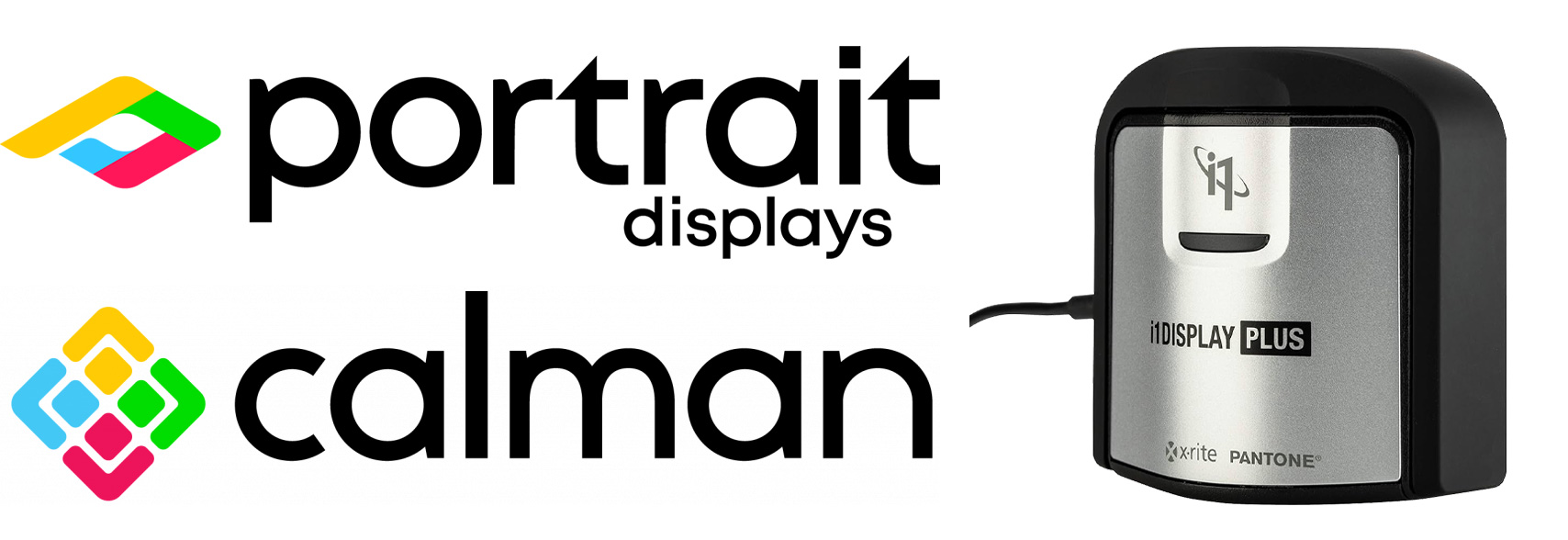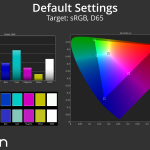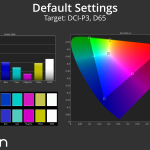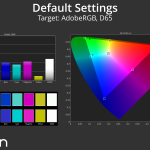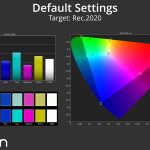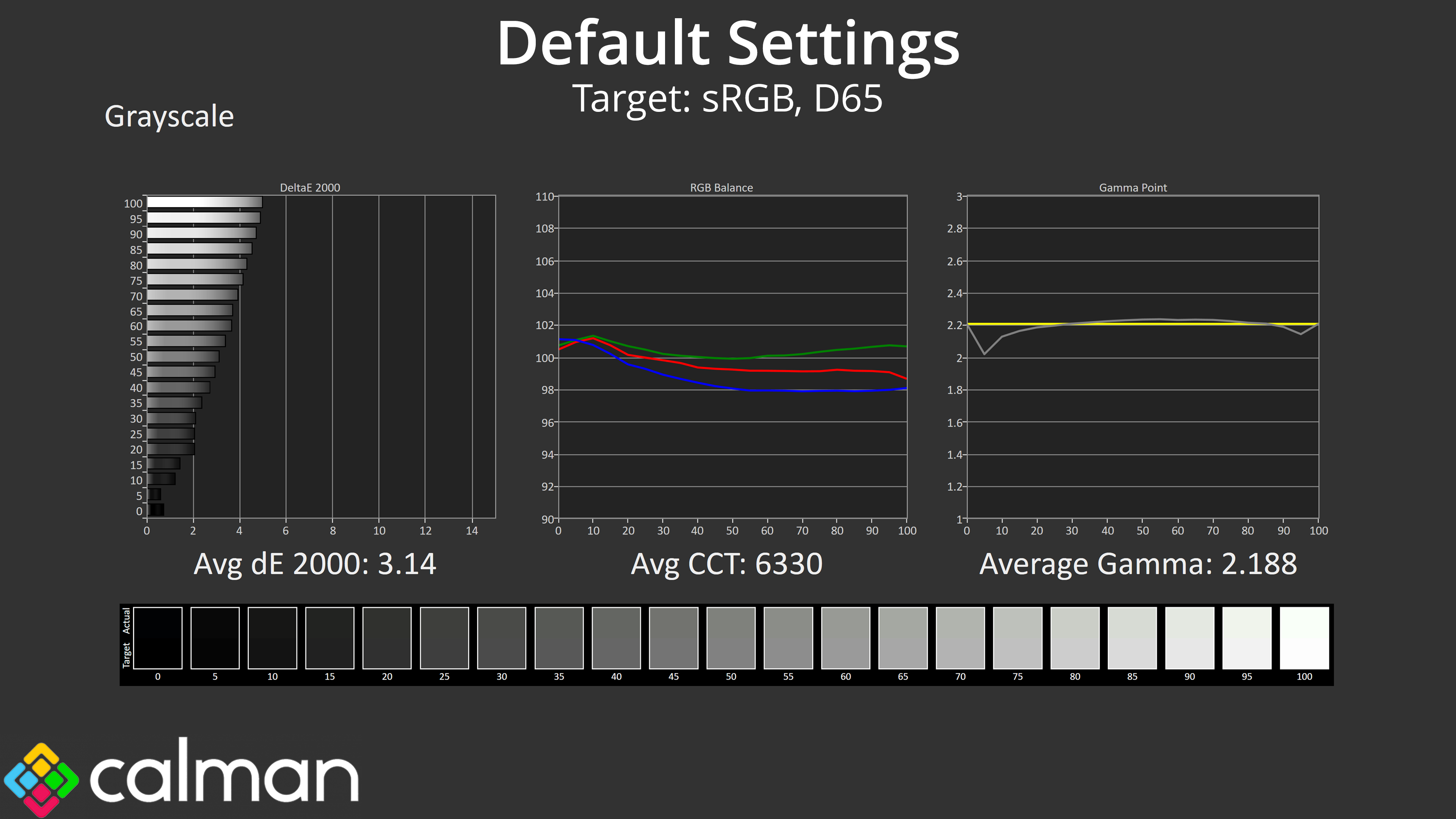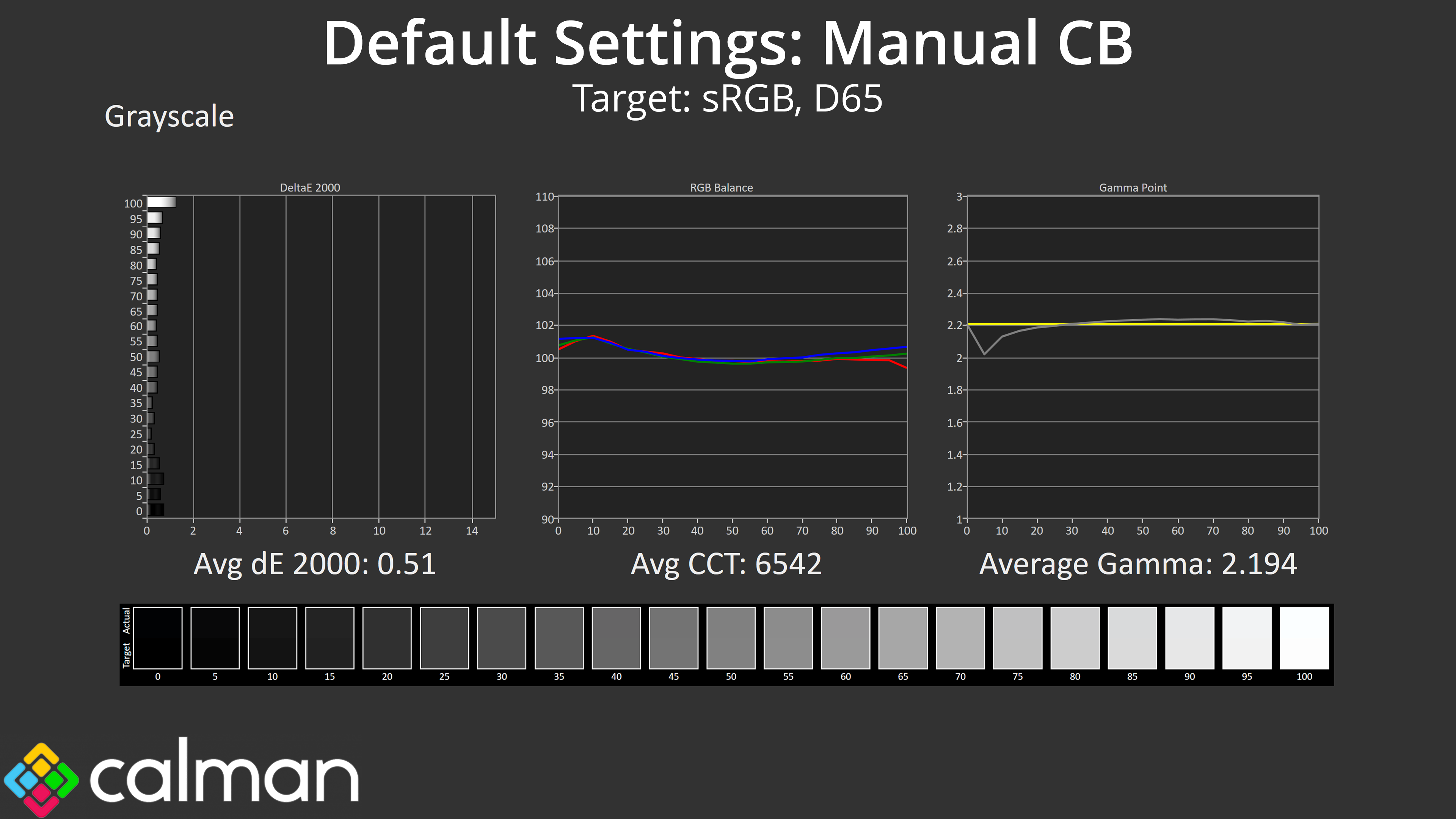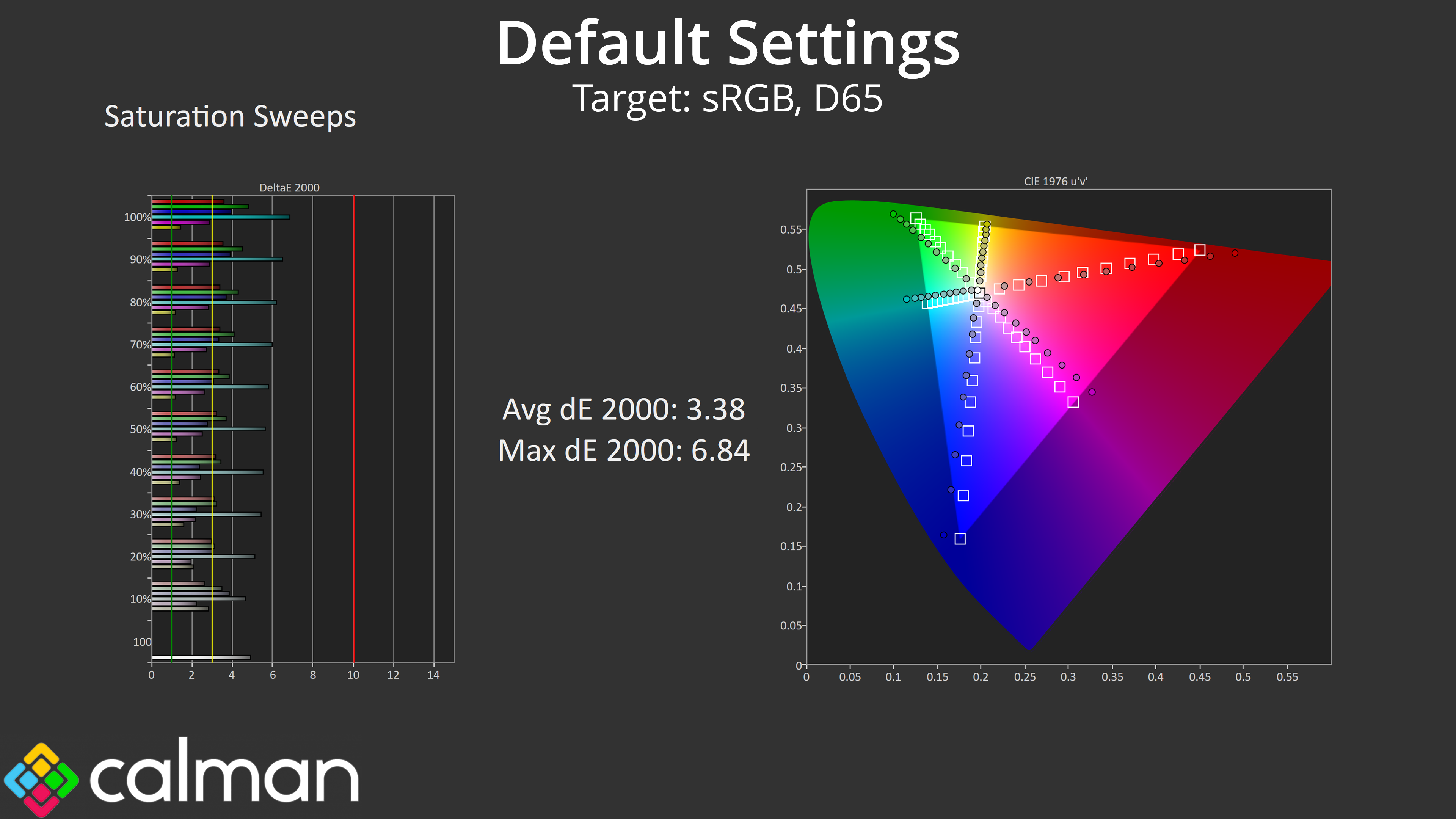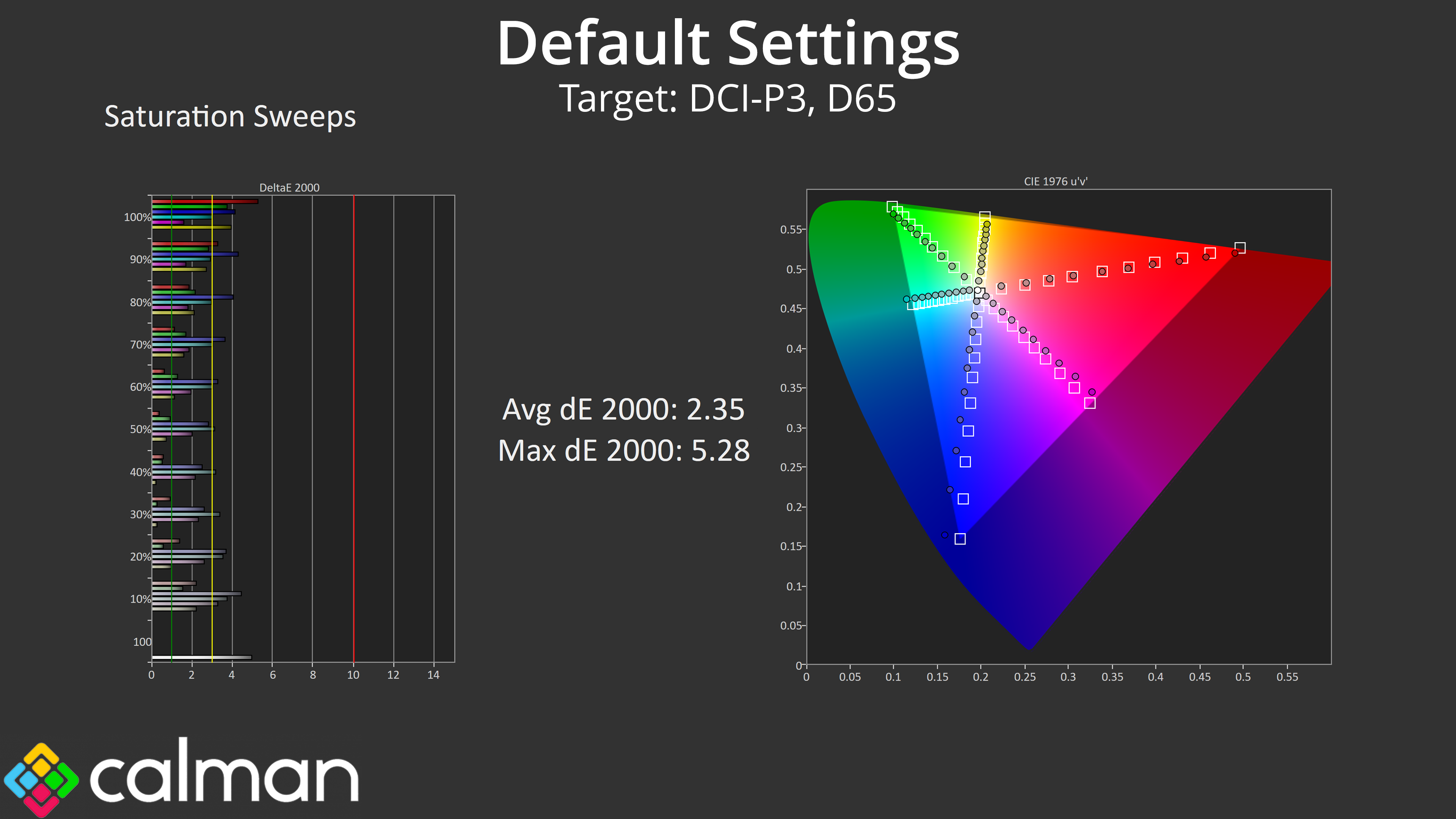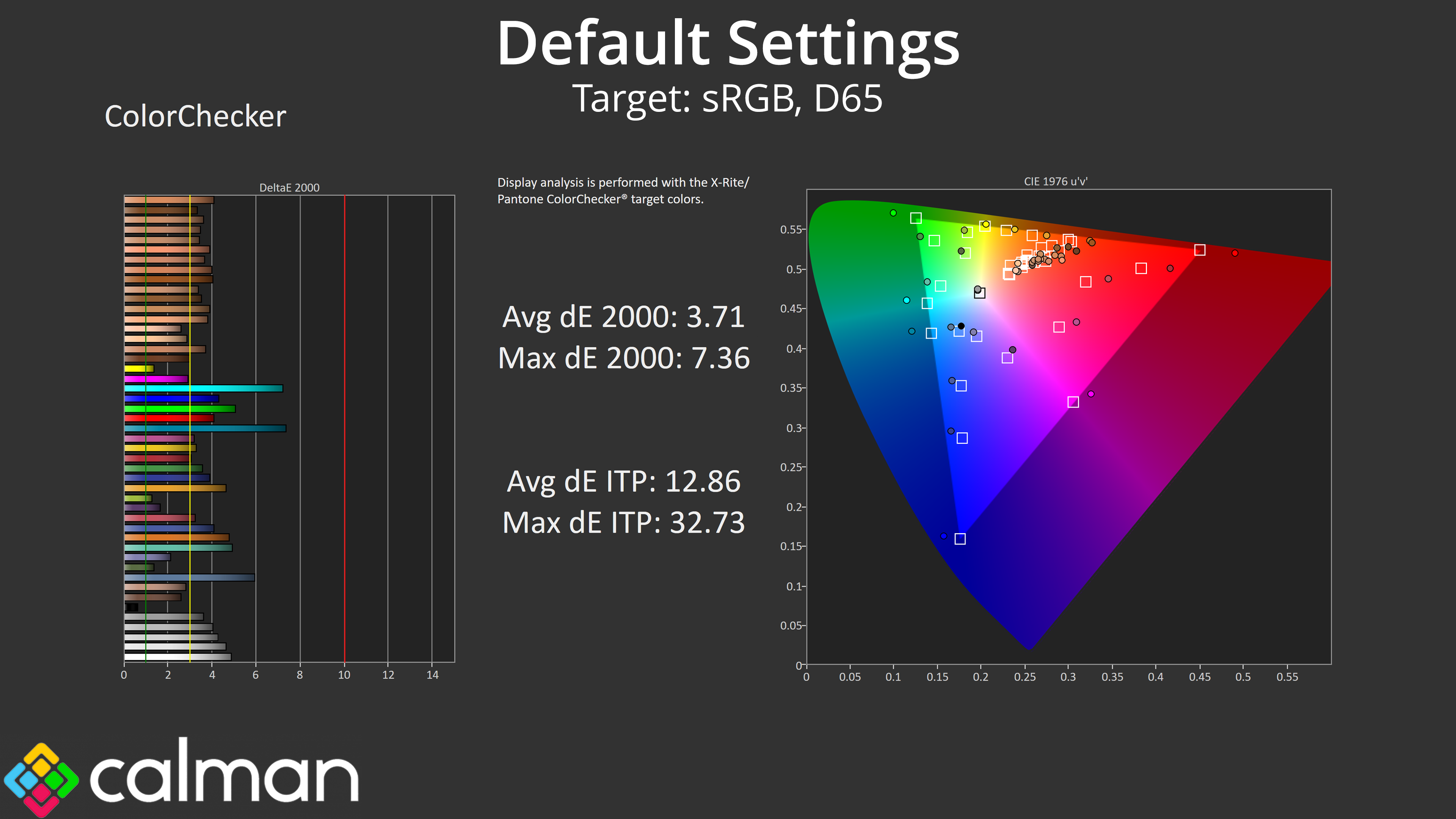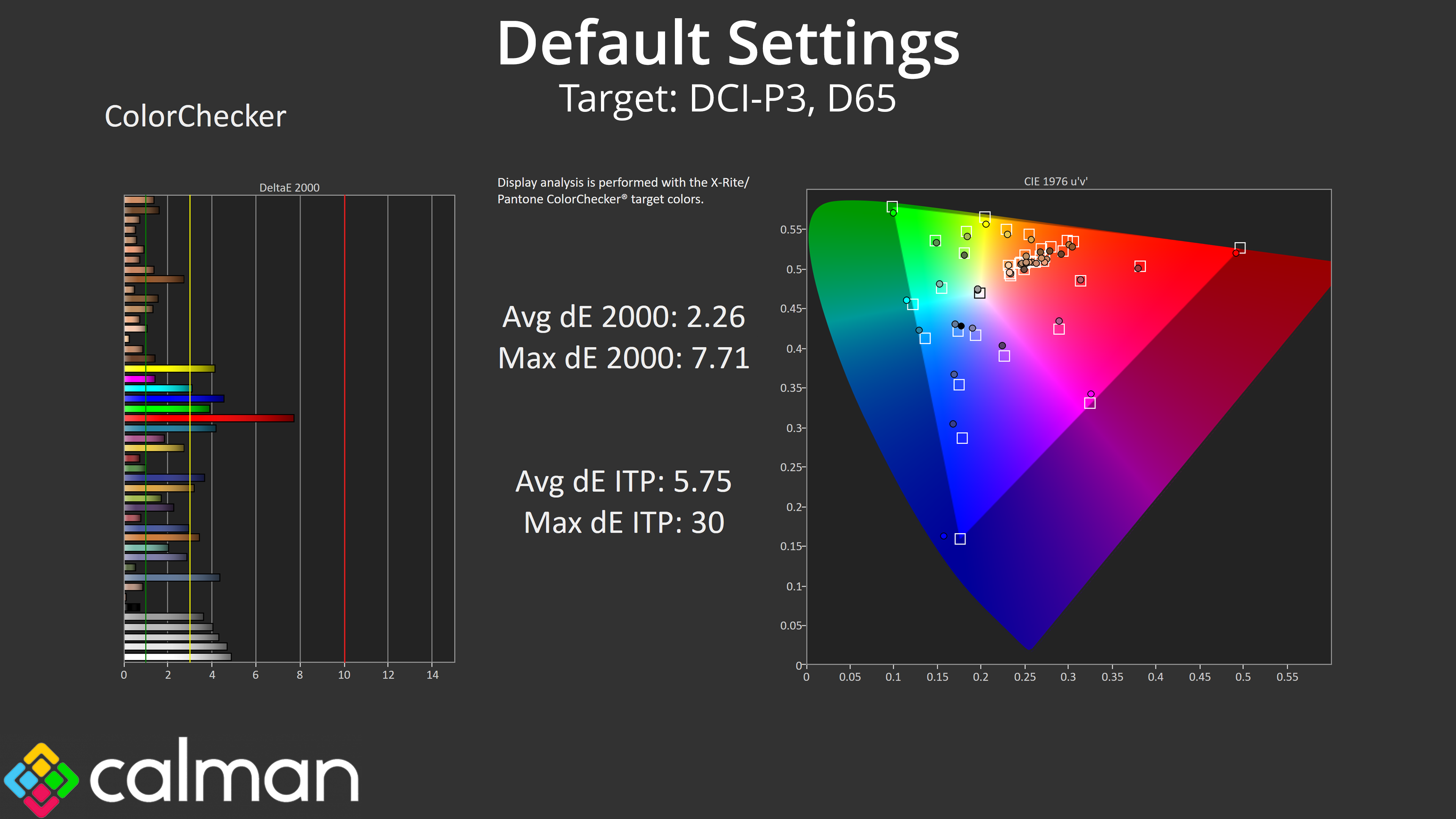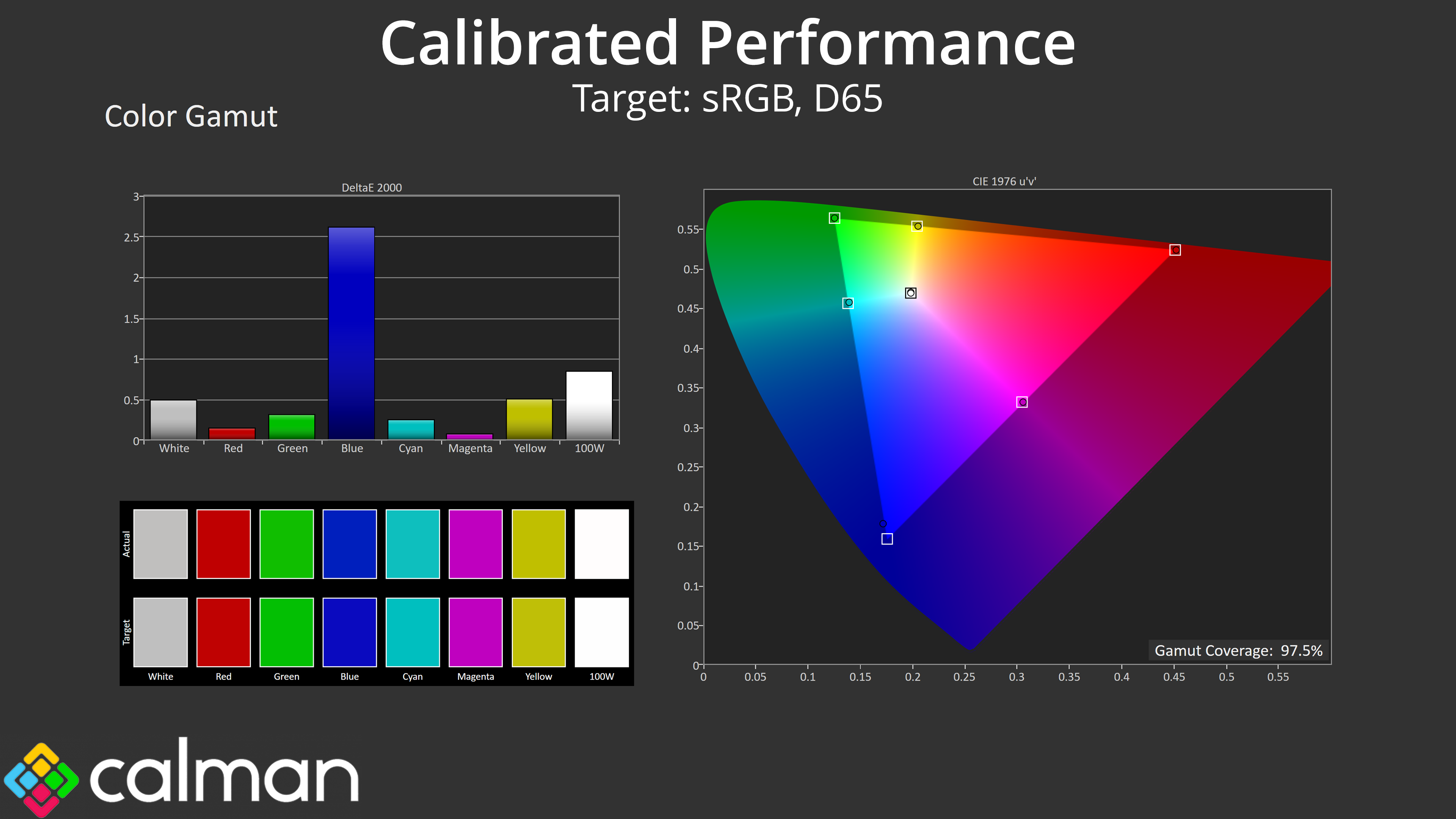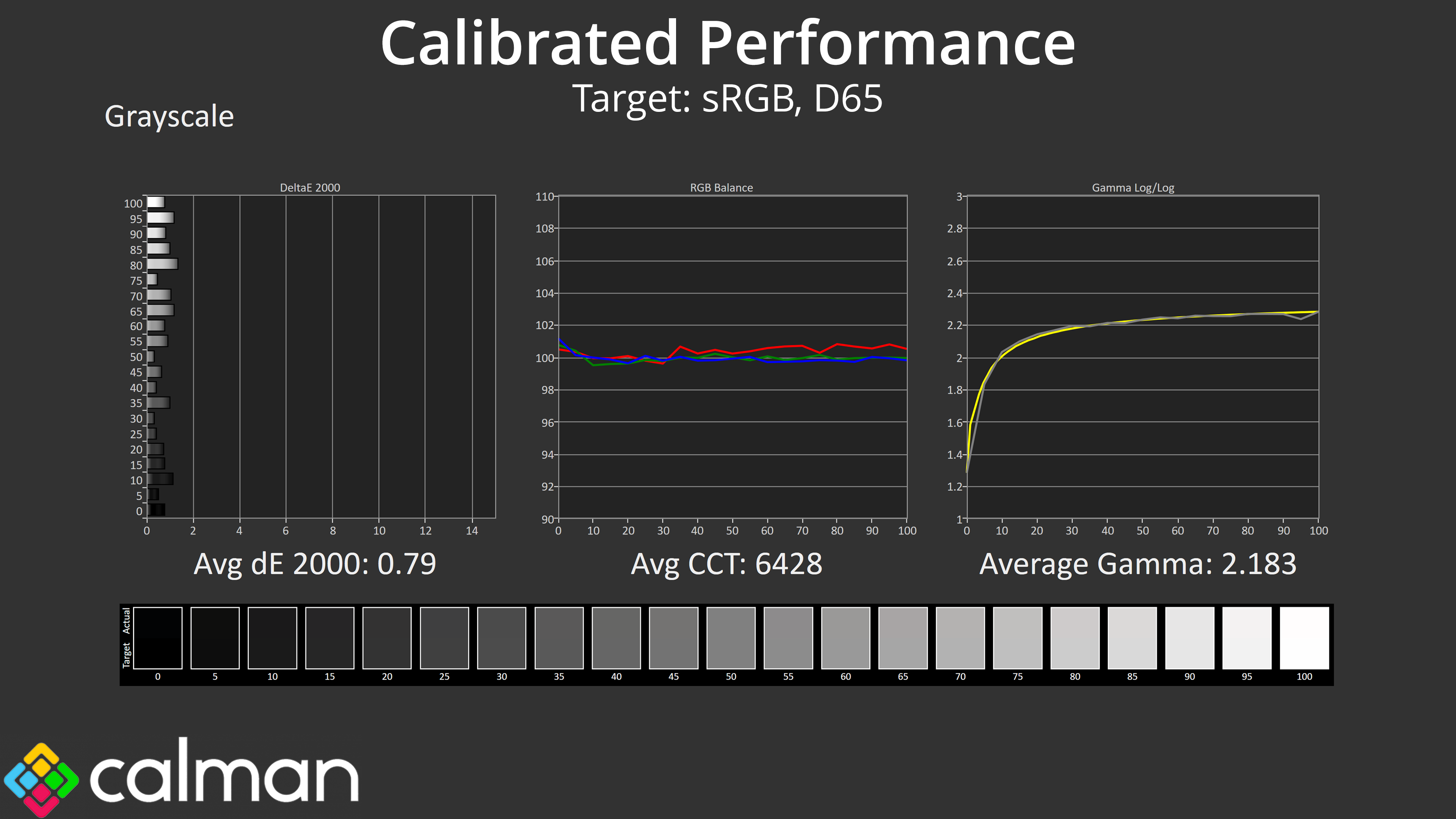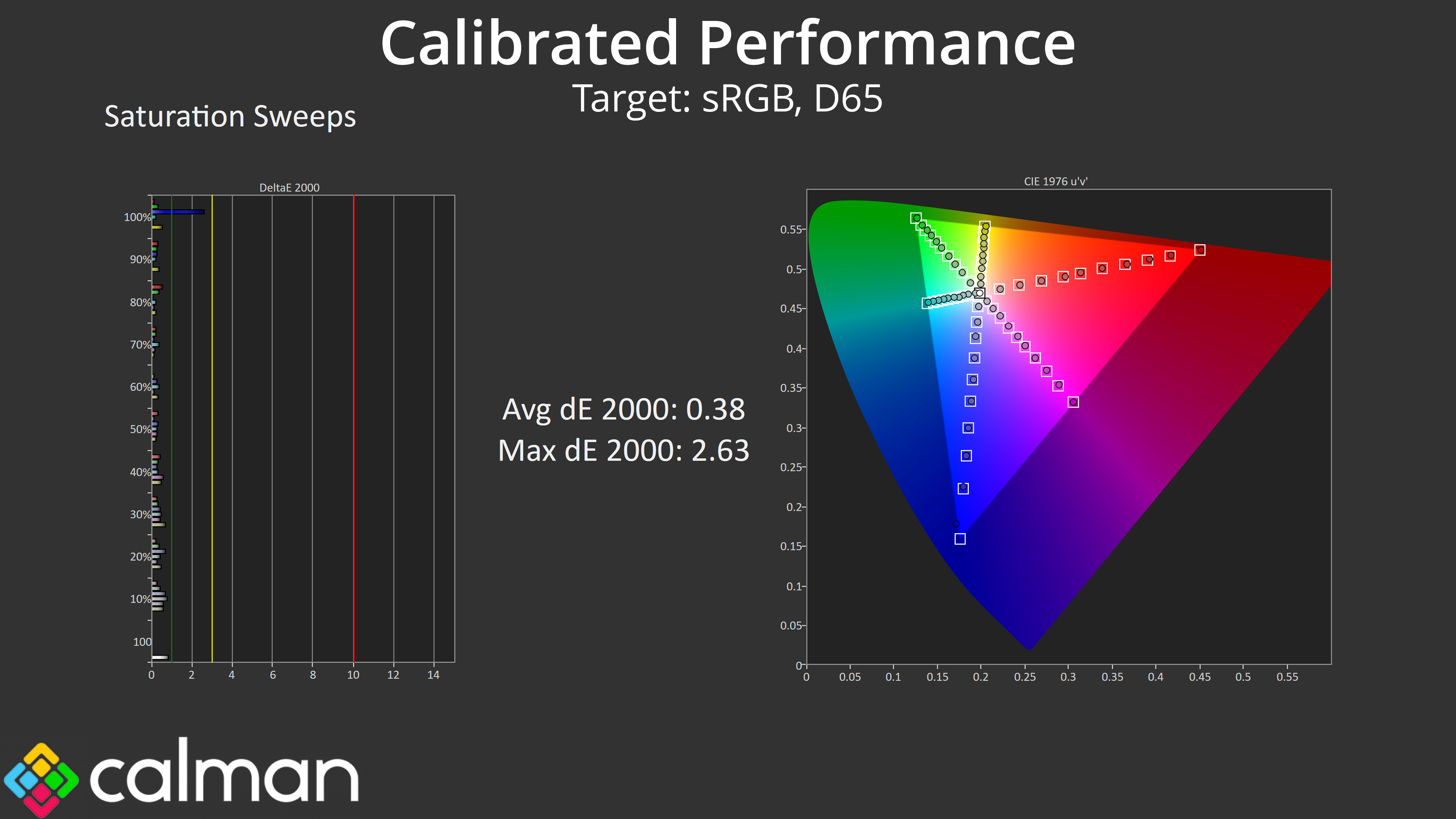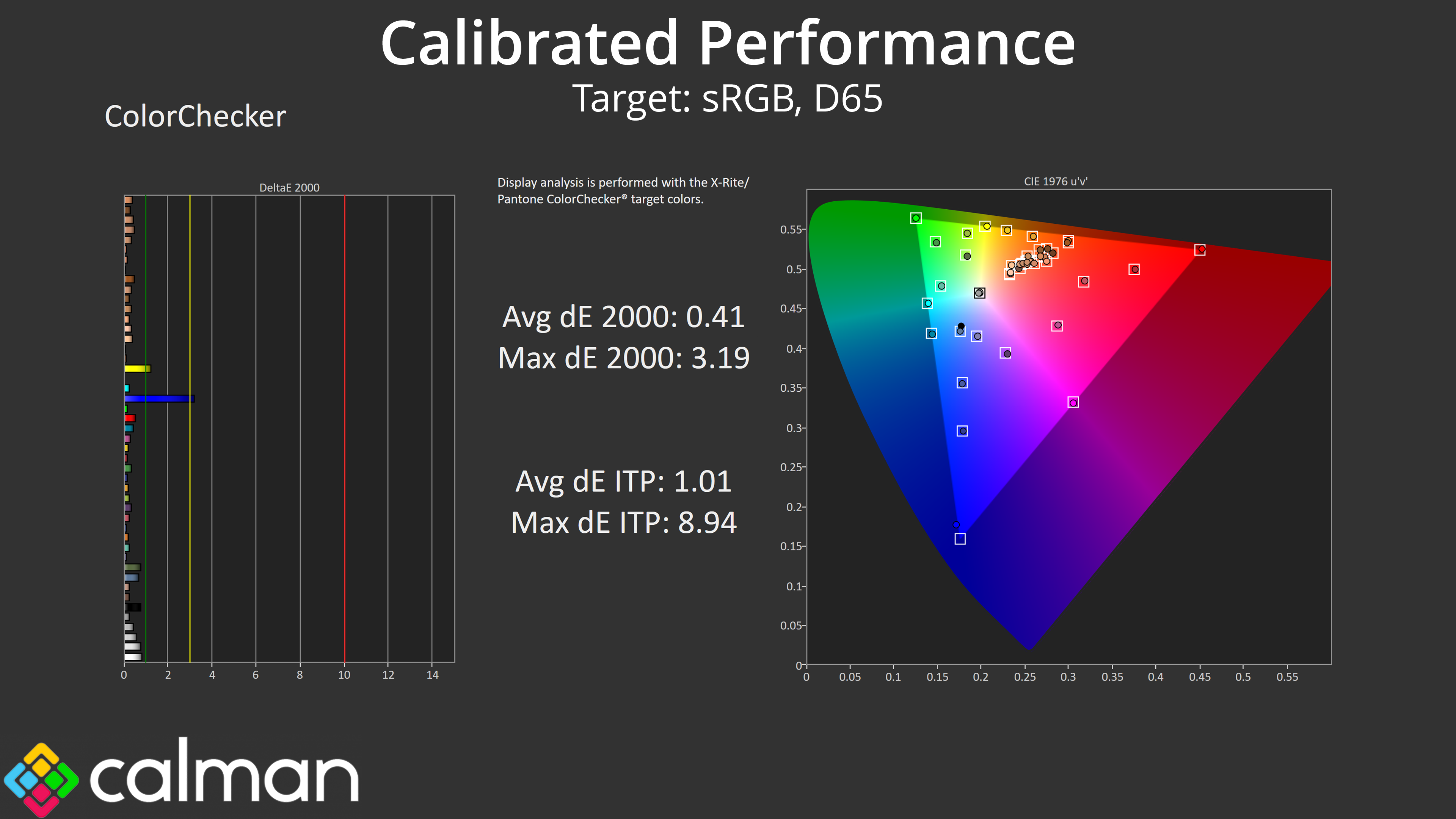Our main test involves using an X-Rite i1 Display Pro Plus colorimeter and utilising Portrait Display's Calman Ultimate software. The device sits on top of the screen while the software generates colour tones and patterns, which it compares against predetermined values to work out how accurate the screen is.
The results show:
- A monitor’s maximum brightness in candelas or cd/m2 at various levels set in the OSD.
- A monitor’s contrast ratio at various brightness levels in the OSD.
- Gamut coverage, primarily focusing on sRGB and DCI-P3 colour spaces.
- Greyscale accuracy, measured across 20 shades, with an average colour balance reported.
- The exact gamma levels, with a comparison against preset settings in the OSD.
- The colour accuracy, expressed as a Delta E ratio, with a result under 3 being fine for normal use, and under 2 being great for colour-accurate design work.
We first run these tests with the display in its out-of-the-box state, with all settings on default. If there is an sRGB emulation option or other useful mode then we may test that too. We then calibrate the screen using the Calman Ultimate software and run the tests again.
You can read more about our test methodology HERE.
Default settings
Brightness and Contrast (Full Screen)
| OSD Brightness | White Luminance (cd/m2) | Black Luminance (cd/m2) | Contrast Ratio |
| 0% | 72.3 | 0.05 | 1457:1 |
| 25% | 126.4 | 0.087 | 1461:1 |
| 50% | 180.5 | 0.124 | 1458:1 |
| 75% | 324.9 | 0.222 | 1461:1 |
| 100% | 462.9 | 0.317 | 1460:1 |
Kicking off with brightness and contrast testing, the overall range of brightness from the PG27FFX2A is solid. It could go a bit dimmer, bottoming out at 72 nits, but it peaks at 463 nits which is above ASRock's claimed 400 nit figure. Contrast is also impressive for an IPS panel, sitting at around 1460:1, well above the claimed 1000:1 ratio.
Gamut (CIE 1976)
| Colour space | Coverage (%) |
| sRGB | 98.3 |
| DCI-P3 | 91.5 |
| Adobe RGB | 94.2 |
| Rec.2020 | 69.7 |
The PG27FFX2A has a reasonably wide gamut, too, generally exceeding the sRGB space and delivering 91.5% coverage for DCI-P3, 94.2% Adobe RGB and 69.7% reporting for Rec.2020. It may not be reaching quantum dot levels, but for a 520Hz monitor, it's wider than I was expecting.
Greyscale
Default greyscale performance is solid, too. Gamma tracking is very accurate out of the box, closely hugging the 2.2 target and averaging 2.188 over the twenty shades tested. Colour balance is fine, averaging 6330K, though you can see there is a slight green tint visible – I didn't find it overly distracting in real world use, but it does enough to push the average greyscale dE 2000 up to 3.14.
The good news is the PG27FFX2A does support manual colour balance, and by leaving the Red channel at 100, but dropping Green to 98 and Blue to 97, I was able to achieve stellar results, with an average colour balance of 6542K, improving the greyscale dE 2000 to just 0.51, a phenomenally good result.
Saturation
As for our saturation sweeps, results are typical of an IPS, given we see a fair chunk of oversaturation relative to sRGB, though this improves slightly when compared against the DCI-P3 colour space.
Colour Accuracy
The same goes for colour accuracy, too – relative to sRGB we're looking at an average dE 2000 of 3.71, and then that improves to 2.26 for the DCI-P3 space.
Calibrated Results
As mentioned previously, and unlike almost every other modern monitor on the market, the PG27FFX2A does not offer an sRGB emulation mode within the OSD. That means we have to manually calibrate for more accurate results, and in fairness to ASRock, the IPS panel used is clearly very capable, delivering excellent results across the board once calibrated – the only slight aberration being the 100% blue channel which isn't quite covered by the screen's native gamut. However, I do wonder how many – if any – people would calibrate a 520Hz gaming monitor, so I really think including an sRGB mode is a must, so that's a missed trick by ASRock.
 KitGuru KitGuru.net – Tech News | Hardware News | Hardware Reviews | IOS | Mobile | Gaming | Graphics Cards
KitGuru KitGuru.net – Tech News | Hardware News | Hardware Reviews | IOS | Mobile | Gaming | Graphics Cards


